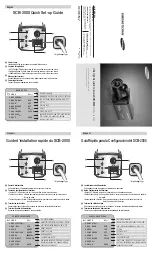INFICON
F.A.Q. - Frequently Asked Questions | 9
T-Guard2_Operating-instructions-jina85en1-13-(2009)
73 / 90
– Check the measurement chamber for leaks. Helium can get lost. Over time,
this results in smaller leak rates. Remedy: Seal the measurement chamber.
Use rubber seals for the chamber lid.
• Why can the device not be calibrated?
– Enter the correct chamber volume and set the trigger level and the calibration
leak rate to the leak rate used. If diluted helium is being used, enter this into
the device.
– Check all answers to the first question: Why are the measurements not
reproducible?
• Why do I get a warning after confirming the new calibration factor?
– Your measurement setup can and should be improved. Remedy: Check the
chamber volume, the calibration leak rate, the trigger level, the He
concentration, the measurement time and the fan, and check the
measurement chamber for leaks.
• Why does the measured leak rate become bigger over time?
– The longer the storage time of the device, the longer it will take for the device
to reach full capacity after start-up. With storage periods of weeks to months,
this run-in phase can take a few hours, however no less than 30 minutes.
– You are using a calibration leak that takes time to stabilize. Remedy: Use an
INFICON leak.
– In your test object, the mixing of helium and air takes too long. Remedy:
Evacuate your test object to the greatest extent possible before filling it with
helium.
– The fans in the chamber are dimensioned too weakly.
• Why does the follow-up measurement deliver a leak rate that is too small after a
gross leak?
– In particular after a measured gross leak, you should flush the measurement
line with low-helium air for at least 4 s and then wait 1 s before the next
measurement. This removes the remaining helium from the measurement
system, which otherwise could affect the follow-up measurement.


















